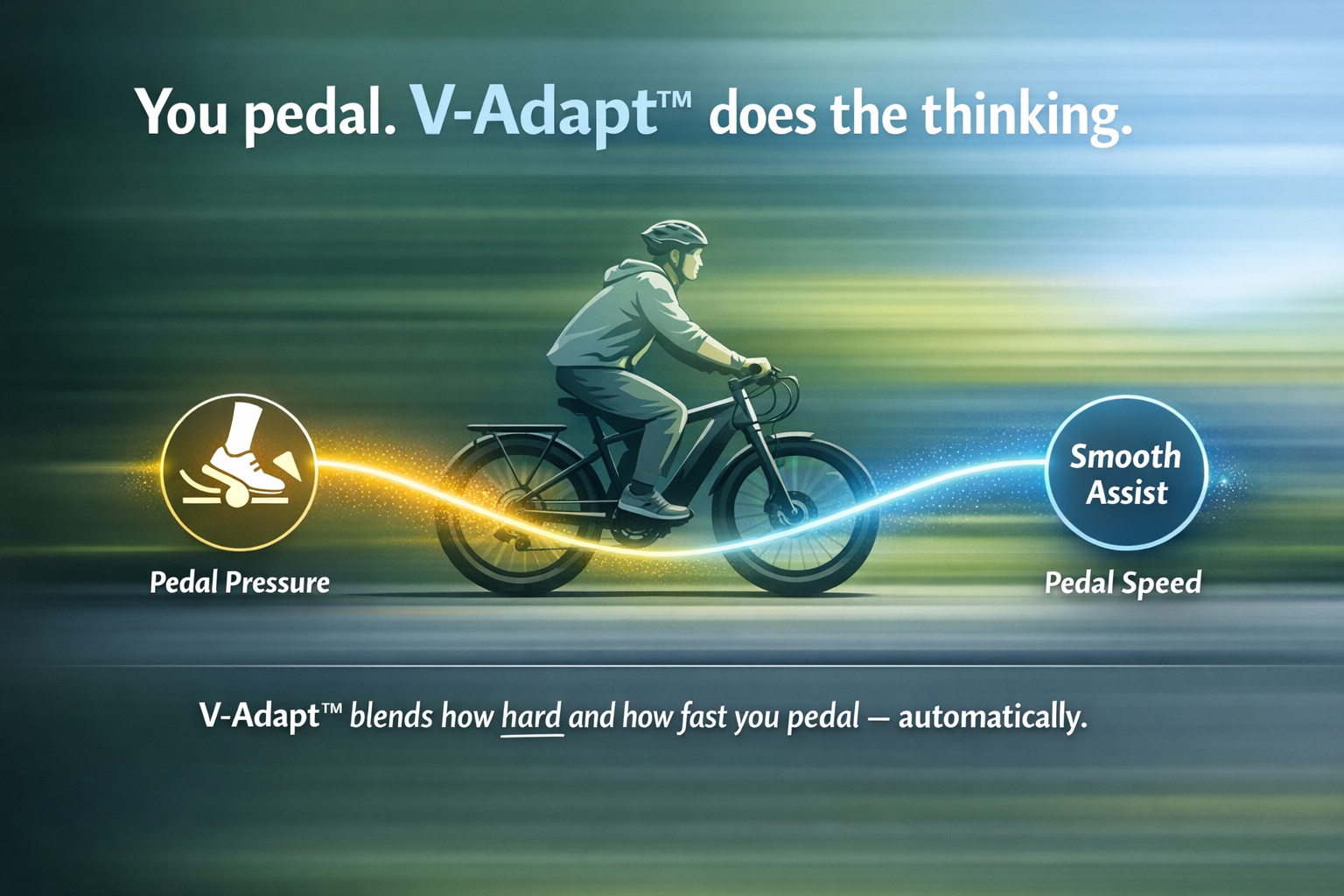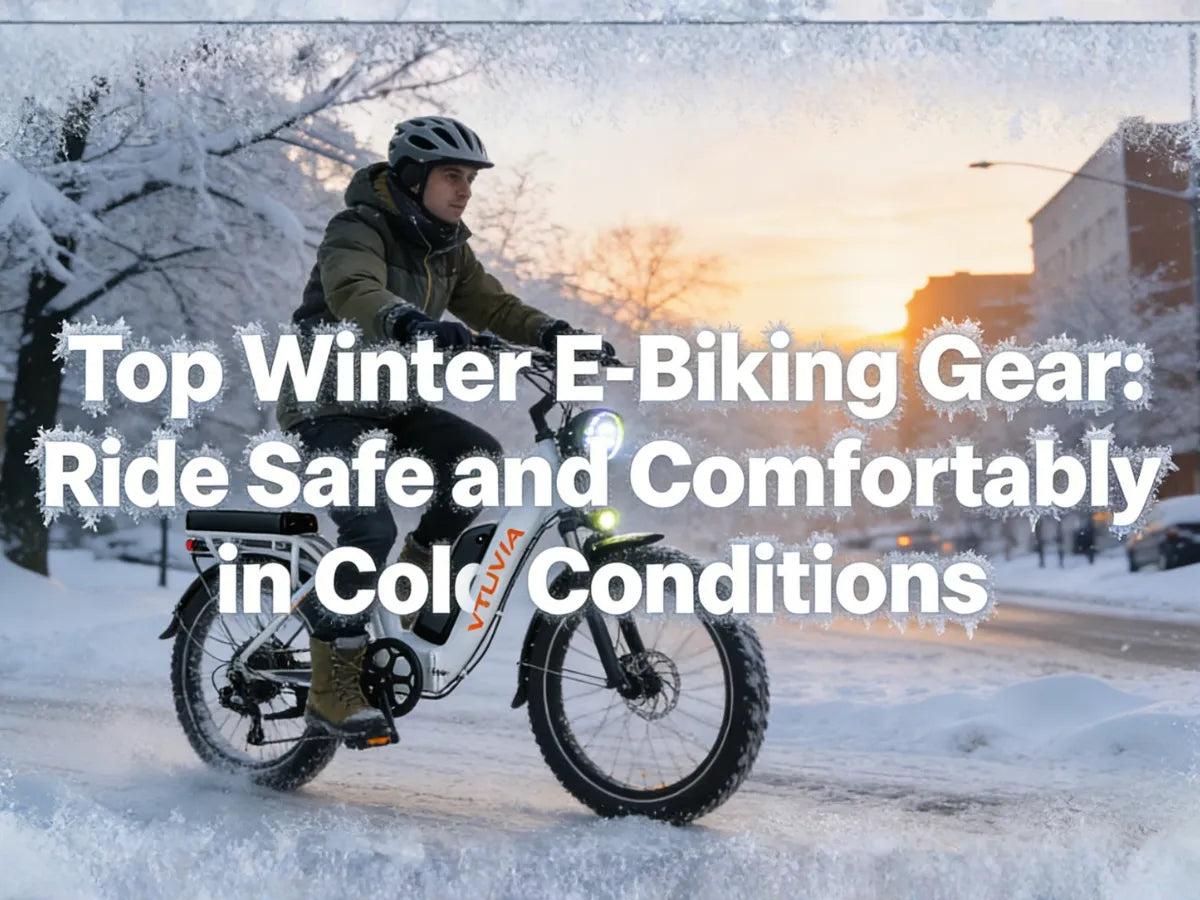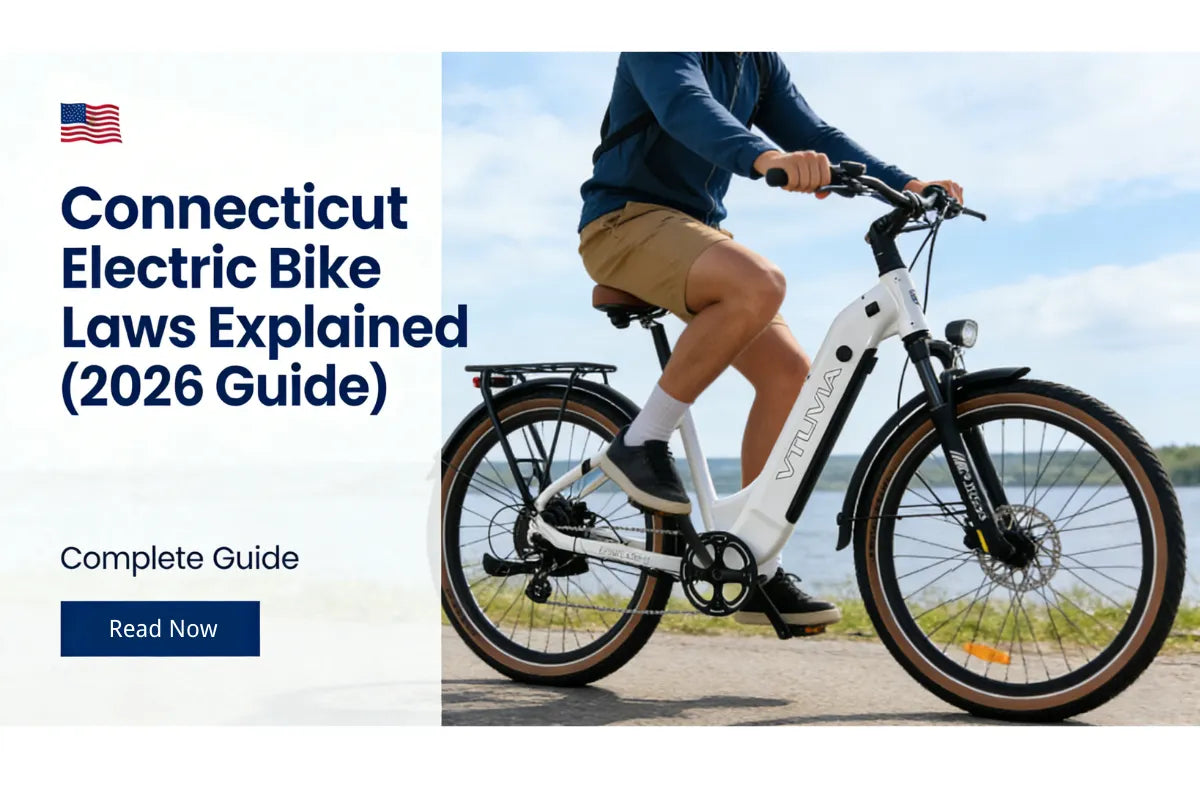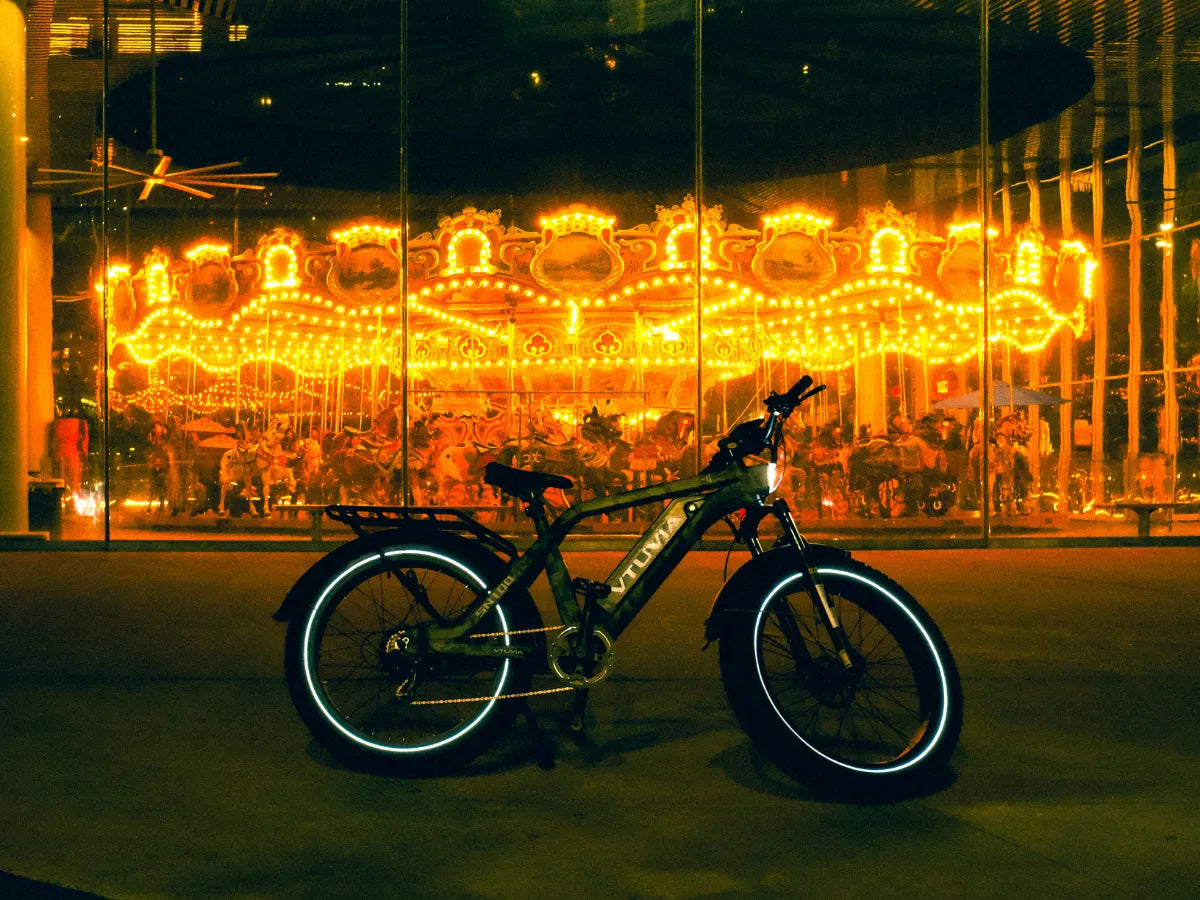Electric bikes (e-bikes) have revolutionized commuting, recreation, and even off-road exploration, offering a hybrid of cycling and motorized power. In this ultimate guide, we’ll dive deep into everything you need to know about e-bikes equipped with both throttle and pedal assist systems. From understanding the basics to expert tips and exploring the future of e-bike technology, this article is designed to be the most comprehensive resource for anyone interested in e-bikes.
Table of Contents
- What is an Electric Bike?
- Throttle vs Pedal Assist: Understanding the Basics
- How Do Electric Bikes Work?
- The Advantages of Electric Bikes with Throttle and Pedal Assist
- Choosing the Right E-bike: Factors to Consider
- Advanced Riding Techniques: Combining Throttle and Pedal Assist
- Common Misconceptions about Electric Bikes
- Maintenance Tips: Keeping Your E-bike in Top Shape
- The Future of Electric Bikes
- FAQs
What is an Electric Bike?
Electric bikes, or e-bikes, are bicycles equipped with an electric motor and a rechargeable battery. Unlike traditional bikes, e-bikes provide motorized assistance while allowing riders to enjoy the benefits of pedaling.
Key Components:
- Motor: Provides assistance to propel the bike.
- Battery: Fuels the motor and determines the range.
- Controller: Allows the rider to manage power levels.
- Sensors: Detect the rider’s pedaling and control the motor's activation.
Key Terms Explained:
- Pedal Assist: The motor helps when you pedal, making it easier to ride.
- Throttle: A handlebar-mounted control that powers the motor without pedaling.
Throttle vs Pedal Assist: Understanding the Basics
Throttle-Controlled E-bikes:
- How It Works: The motor is engaged by a grip on the handlebars. No pedaling is required to activate the motor.
- Advantages: Instant acceleration, ideal for hills and heavy loads, no pedaling needed.
- Disadvantages: More frequent battery drain, less efficient, may require registration in some regions.
Pedal Assist E-bikes:
- How It Works: The motor activates when you pedal, offering support proportional to your effort.
- Advantages: More efficient, extended battery life, offers a more natural riding experience.
- Disadvantages: Requires pedaling to activate the motor, may feel less powerful on steep inclines.
How Do Electric Bikes Work?
E-bikes operate through a combination of components working together:
- Motor: The core of the e-bike, typically ranging from 250W to 750W, powers the bike.
- Battery: The motor draws power from the battery, which is typically lithium-ion, providing range between 15-75 miles.
- Sensors: They detect the rider’s pedaling or throttle input and activate the motor accordingly.
- Controller: Located on the handlebars, it allows you to switch between throttle, pedal assist, or both.
The Advantages of Electric Bikes with Throttle and Pedal Assist
1. Power and Flexibility
Seamlessly switch between pedal assist and throttle to match your terrain, speed, and energy levels. Example: Switch to throttle mode on a steep hill or when carrying heavy loads, and use pedal assist for longer rides to conserve energy.
2. Efficiency
More efficient than traditional bikes, with less effort required for longer or hilly commutes. Research: Studies show that riders using pedal assist can travel up to 25% farther on the same battery compared to using throttle only.
3. Eco-Friendly
Zero emissions and reduced carbon footprint compared to cars. Benefit: E-bikes offer a sustainable way of commuting, reducing both traffic congestion and pollution.
4. Health Benefits
While the throttle provides ease, pedal assist encourages physical activity, providing cardiovascular benefits.
Choosing the Right E-bike: Factors to Consider
When selecting an e-bike with throttle and pedal assist, several key factors will help determine the best fit for you:
1. Purpose:
- Commuting: Look for lightweight frames, durable components, and long battery life.
- Recreational Riding: Opt for a bike with both throttle and pedal assist for a balanced, enjoyable ride.
- Off-Road: Consider models with robust tires, suspension, and powerful motors.
2. Battery Capacity & Range:
- Key Metric: Higher voltage and amp-hour batteries offer extended ranges. Aim for at least 20 miles per charge.
3. Motor Power:
- More Power: Higher-watt motors are great for hills, but they may reduce battery life.
4. Frame and Design:
- Comfort: Choose a frame style that suits your riding preference (step-through for easy mounting, mountain bike frames for off-road).
Advanced Riding Techniques: Combining Throttle and Pedal Assist
1. Maximizing Efficiency
Use the throttle for quick starts and hill climbs, then switch to pedal assist for longer, more energy-efficient rides.
2. Optimizing Range
Adjust pedal assist to a lower level on flat terrains to conserve battery. Tip: Use the throttle sparingly in flat conditions to maximize range.
3. Combining Modes in Different Conditions
Example: When commuting in mixed terrain, start with pedal assist on flat roads, then switch to throttle mode for uphill stretches.
Common Misconceptions about Electric Bikes
1. "E-bikes are cheating."
Fact: E-bikes provide an extra boost but still require pedaling, offering both a fun and efficient workout.
2. "E-bikes are too expensive."
Fact: Prices have dropped significantly in recent years, and the overall cost of ownership (fuel, maintenance) is much lower than cars.
3. "E-bikes are dangerous."
Fact: E-bikes are just as safe as traditional bikes when used responsibly with proper gear and adherence to safety rules.
Maintenance Tips: Keeping Your E-bike in Top Shape
1. Battery Care
Charge your battery regularly but avoid overcharging. Store it in a cool, dry place.
2. Motor and Controller
Inspect wiring for damage and keep the motor clean and dry to prevent corrosion.
3. Brakes and Tires
Regularly check brake pads and tire pressure. Replace worn tires to maintain safety and efficiency.
The Future of Electric Bikes
1. Emerging Trends in E-bike Technology
- Smarter Motors: More efficient and compact, with features like regenerative braking.
- Better Batteries: Advancements in lithium-ion technology will increase range and decrease weight.
2. Sustainability and Environmental Impact
E-bikes will continue to lead the charge in reducing emissions and promoting green transportation.
3. Innovations in E-bike Design
More lightweight, foldable, and integrated designs will make e-bikes more versatile for urban commuting and adventure riding.
FAQs
1. How fast can an electric bike with throttle and pedal assist go?
Most e-bikes with throttle and pedal assist can reach speeds of 20-28 mph.
2. Can I use an electric bike for exercise?
Yes, when using pedal assist, you can still get an aerobic workout while benefiting from the motor's assistance.
3. How long does the battery last?
Typically, 2-5 years, depending on usage and care. Battery range varies from 15 to 75 miles.
4. Are electric bikes legal?
Yes, in most places, but check local regulations regarding speed limits, registration, and age requirements.
5. How much maintenance do electric bikes need?
Basic maintenance includes checking the brakes, tires, and battery, and ensuring that the motor and controller are in good condition.
By following this comprehensive guide, you can make an informed decision about choosing and maintaining an e-bike equipped with both throttle and pedal assist. Whether for commuting, recreation, or adventure, e-bikes offer an exciting, eco-friendly, and efficient mode of transportation. Ready to explore the possibilities? Let us know your thoughts, and feel free to share your experiences in the comments below!





Share:
V Day - Free Electric Bike Maintenance and Repair Service
Riding Electric Bikes in CA: Understanding the State Laws